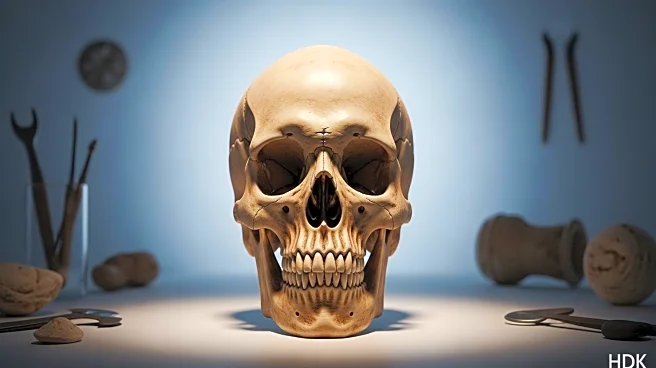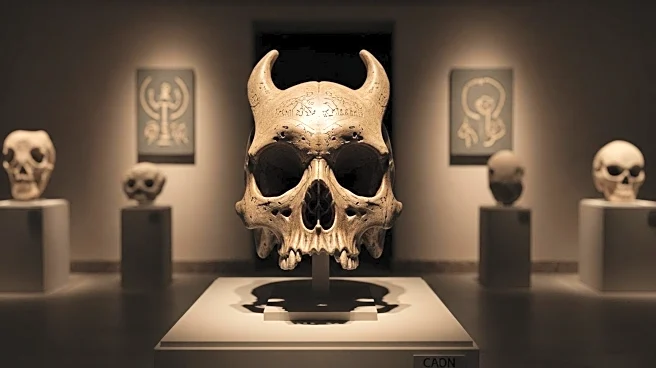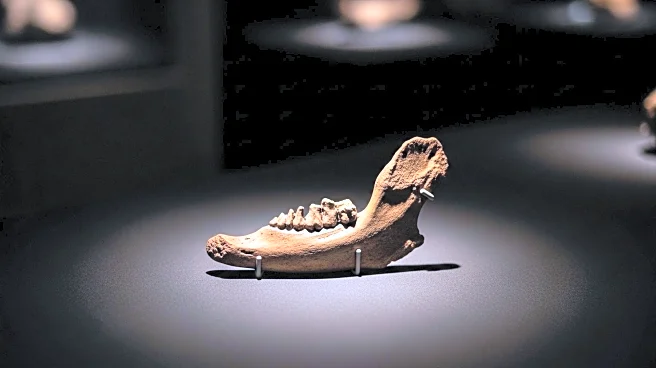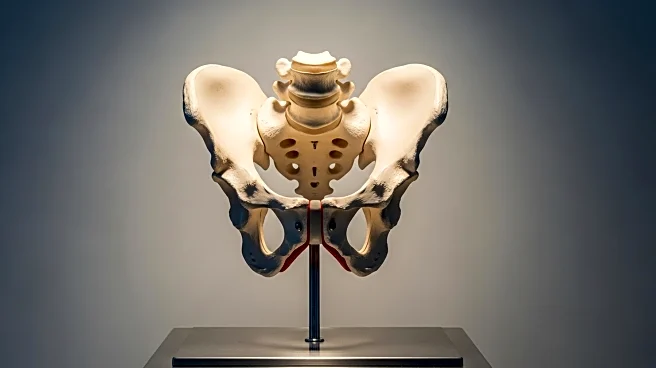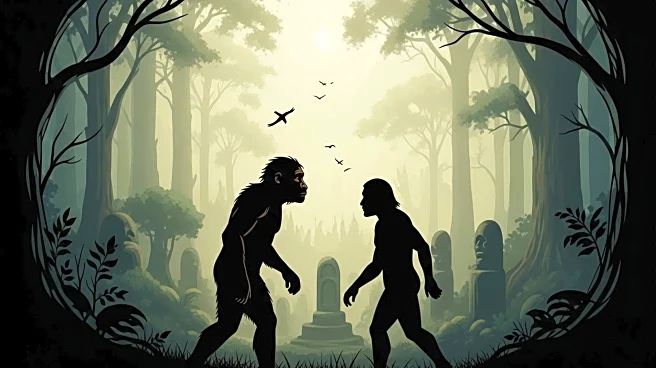What's Happening?
Researchers have uncovered a skull in the Petralona Cave in Greece that is not derived from Homo sapiens or Neanderthals. Known as the Petralona skull, it was discovered in 1960 and has been dated to be between 277,000 and 295,000 years old. The skull is believed to belong to Homo heidelbergensis, a primitive hominid species that coexisted with Neanderthals during the Middle Pleistocene era in Europe. The discovery has sparked debate among scientists regarding the timeline and evolution of human ancestors, as the skull shows similarities to another found in Kabwe, Zambia, which is also classified as Homo heidelbergensis.
Why It's Important?
The discovery of the Petralona skull is significant as it provides insights into the evolution of human ancestors and their coexistence with Neanderthals. This finding challenges existing theories about the timeline of human evolution and suggests a more complex ancestry than previously thought. Understanding the evolutionary history of Homo heidelbergensis can shed light on the migration patterns and adaptation strategies of early humans. The research could influence future studies in anthropology and paleontology, potentially leading to a reevaluation of the evolutionary timeline and the relationships between different hominid species.
What's Next?
Further research and analysis are expected to continue as scientists aim to refine the dating and classification of the Petralona skull. This may involve advanced dating techniques and comparative studies with other hominid fossils. The scientific community is likely to engage in discussions and debates regarding the implications of this discovery on human evolution theories. Additionally, the findings may prompt new archaeological expeditions in Europe and Africa to uncover more evidence of Homo heidelbergensis and other ancient hominid species.
Beyond the Headlines
The discovery raises ethical and cultural questions about the interpretation of human ancestry and the representation of ancient species in museums and educational materials. It also highlights the challenges faced by scientists in accurately dating prehistoric samples and the potential for new technologies to improve these methods. The Petralona skull could become a focal point for discussions on the diversity and complexity of human evolution, encouraging interdisciplinary collaboration among researchers in anthropology, archaeology, and genetics.
